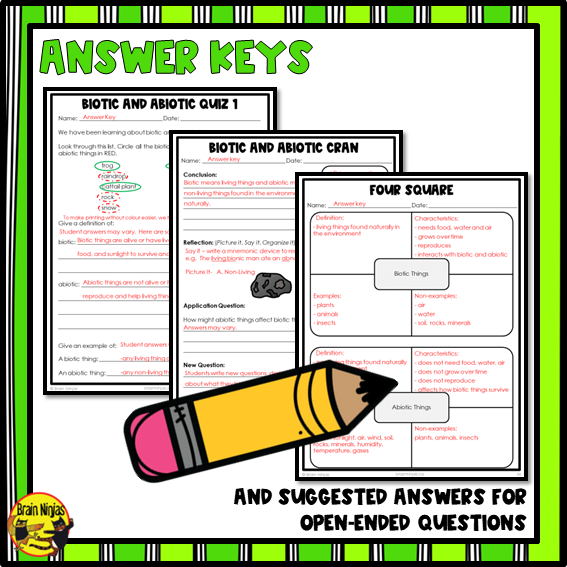Wetlands Biotic and Abiotic Interactions | Paper and Digital
Wetlands Biotic and Abiotic Interactions | Paper and Digital
Couldn't load pickup availability
Students can learn about living and non-living things in wetland ecosystems through these activities and assessments. This lesson uses inductive learning and includes modifications for a variety of learning needs with minimal preparation for you.
This resource is part of our Wetlands Unit.
This engaging resource includes:
- complete lesson plans with options to differentiate for your students.
- background information on biotic and abiotic factors in wetland ecosystems.
- instructions for inductive learning teaching strategy.
- student worksheets and templates.
- answer keys and suggested answers.
- plants and animals that are native to Canada. Sorry, no alligators.
- a digital version with loose text that can be read by your assistive technology.
This resource is based on the old Alberta curriculum. We have a better resource for Alberta teachers in Grade 6: Biotic and Abiotic Factors in Ecosystems.
This resource supports:
- any upper elementary or middle school science unit about wetlands or ecosystems.
Do you teach science in Alberta? We have science units for you!
- Learn how we're adjusting resources to align with the new science curriculum in Alberta.
- Grade 3 Full Year of Lessons and Activities
- Grade 4 Full Year of Lessons and Activities
- Grade 5 Full Year of Lessons and Activities
- Grade 6 Full Year of Lessons and Activities
Do you teach science in Canada? These units are for you:
- Waste in Our World Unit
- Light Science Unit
- Plant Growth Unit
- Simple Machines Unit
- Weather Unit
- Wetland Ecosystems Unit
- Electricity and Magnetism Unit
- Chemistry Unit
- Astronomy Unit
- Human Body Systems
Ninja Note: This file is a PDF. To print or access the digital version, download the file and click on the digital access link.
Have a question? Before contacting us, check our Frequently Asked Questions page.














